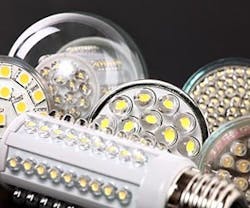Still hesitant about LEDs?
Spooked by poor-quality products and installations gone wrong, many would-be customers are hesitant to invest in solid-state lighting. But examining a few quality indicators, you can ensure you’re choosing a dependable product.
“One size and type lighting does not fit all,” says Gersil N. Kay, president of Conservation Lighting International Ltd. and founder of Building Conservation International. “Don’t use LEDs just because they’re there – use them because they’re the best solution for your problem.”
1) Test Results
Start by checking out the Lighting Facts label, recommends Shanna Olson, senior lighting designer for engineering firm KJWW. This third-party program was developed by the DOE and provides data like lumen output, watts, efficacy, color temperature, CRI, and testing methods.
Also look for the appropriate TM-21 testing for lumen maintenance, which will paint a clearer picture of the product’s expected lifetime. Developed by the Illuminating Engineering Society (IES), TM-21 extends lumen depreciation beyond the period required by LM-80, which specifies how LED arrays are tested.
“The life of an LED is not based on mean burnout time, but on a percentage of lumen depreciation,” Olson explains. “The standard for ambient illumination is L70, or 70% lumen maintenance.”
Detailed test reports are available for free from the DOE’s Commercially Available LED Product Evaluation and Reporting (CALiPER) program at energy.gov.
2) Photometric Calculations
Does your vendor provide photometric data such as lumens emitted and luminous intensity? If so, ensure they provide you with designed light levels, not initial light levels, recommends Olson.
Another factor, the allowed MacAdam’s ellipses (also commonly known as “steps”), indicate how much the color is allowed to vary between each luminaire.
“The human eye can see the difference between two to three steps. The ANSI standard is seven,” says Olson. “However, this is equivalent to older metal halide lamps where one appeared pink and the next green. I would suggest no more than four steps, or no more than three for a continuous run.”
3) Assembly and Design
Heat is the most common cause for early depreciation, Olson explains, and the LED’s ability to dissipate heat is directly related to lumen maintenance.
“Avoid luminaires that require additional means of cooling,” adds Olson. “It’s another point of possible failure.”
Other factors that can affect lifetime include inconsistent voltage or current, moisture, vibration, and the wrong controls or interface being installed, adds Kay.
“Even if the manufacturer says it will replace components at no charge, who pays for the labor to install them?” Kay asks.
4) Serviceability
Some luminaires have detachable modules that can be replaced quickly, while others may require labor-intensive maintenance, Olson says.
“In 5 to 10 years, many luminaires will need to be entirely replaced at a significant cost. I recommend completing a group replacement if the budget allows,” Olson adds. “Issues that may arise from individual re-lamping include lumen output, color quality, and control type. Even if the manufacturer provides the same qualities as the initial product, the existing luminaires have already depreciated in lumen output and may have shifted in color temperature.”
5) Field Observation
There’s no test like a visual one, Kay says. Software modeling is useful, but you should see a real installation before you make your final decision.
“Unless you see what’s proposed, it shouldn’t be done,” Kay adds. “It’s very important that mockups are done in the presence of the decision-maker.”
6) Age
LEDs change so quickly that it pays to ask the age of the fixtures you’re considering installing, says Kay.
“Besides the age of the LEDs, ask about the source of the components so you know if they’re from a quality vendor,” Kay says. “If you use cheap products, the game is stacked heavily against you.”
About the Author
Janelle Penny
Editor-in-Chief at BUILDINGS
Janelle Penny has been with BUILDINGS since 2010. She is a two-time FOLIO: Eddie award winner who aims to deliver practical, actionable content for building owners and facilities professionals.

